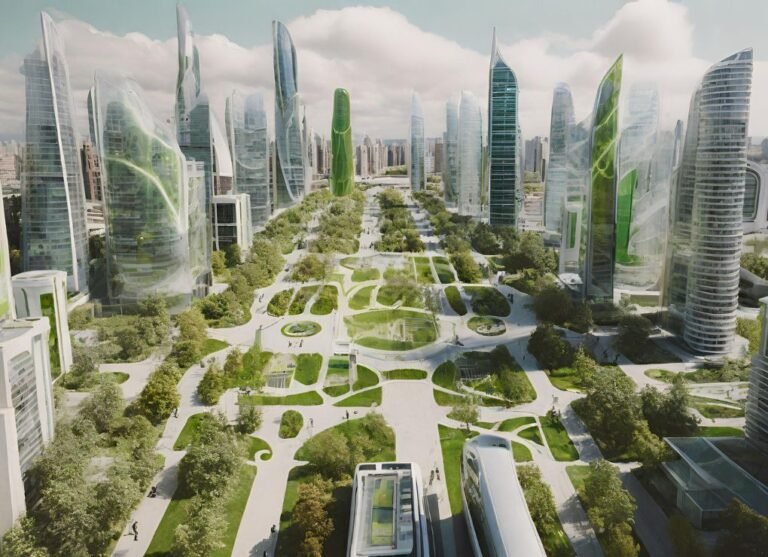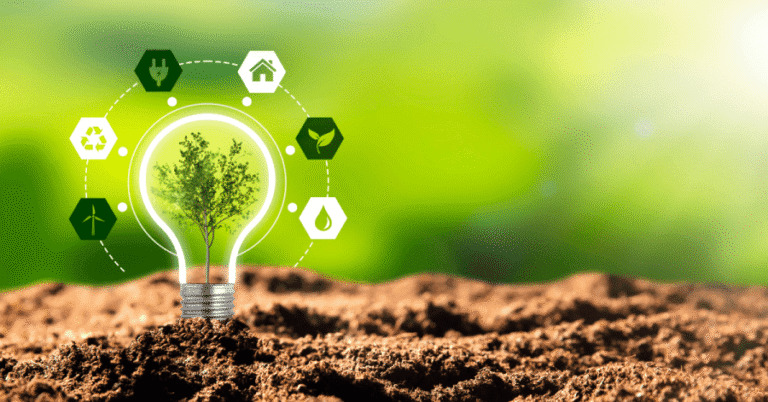
Green technology, also known as clean technology or environmental technology, is a broad term that refers to the application of science and innovation to develop environmentally friendly products and processes. Such technologies seek to reduce the negative impact of human activities on the environment by improving energy efficiency, reducing waste production, and controlling pollution. It promotes sustainable development by conserving natural resources and encouraging the use of renewable materials and energy. Climate change and environmental degradation continue to pose major global challenges, making green technologies more relevant and important than ever.
The Origins and Development of Green Technology
The origins of green technology can be traced back to the environmental movement of the 1960s and 1970s, when growing concerns about pollution and resource depletion prompted a search for long-term solutions. Over the years, scientific advances and changing public and political attitudes have led to a proliferation of green technologies. Governments, businesses, and individuals are rapidly embracing them as a way to reconcile economic growth and environmental responsibility. With increased investment and innovation, green technology has become a focus in sectors such as energy, construction, transportation, agriculture, and manufacturing.
Key Areas for Green Technology Application
Green technologies are being applied in many areas of our daily lives and businesses. One of the most important areas is renewable energy, including solar, wind, hydro, and geothermal. These energy sources produce electricity with little to no emissions, reducing our reliance on fossil fuels. Green technologies in buildings include sustainable construction, energy-efficient lighting, smart thermostats, and eco-friendly building materials. Organic farming, vertical farming, and systems that conserve water and pesticides are all examples of green technologies in agriculture. Even the automotive industry is embracing green technologies such as electric vehicles and more environmentally friendly fuels.
The Benefits of Green Technology for the Environment
Green technologies offer a range of environmental benefits. They help reduce harmful emissions from industries, automobiles, and power plants, thereby reducing pollution. They also promote recycling and proper disposal, which reduces waste in landfills. In addition, by using renewable energy, green technology minimizes the extraction and consumption of non-renewable resources such as coal, oil, and natural gas. This helps protect ecosystems and biodiversity. Another environmental benefit is improved air and water quality, which benefits the health of communities and animals.
The Economic Benefits of Green Technology
In addition to the environmental benefits, green technologies also have major economic benefits. They have created new job opportunities in emerging sectors such as solar panel manufacturing, wind turbine maintenance, and environmental consulting. As demand for green products and services continues to grow, companies can gain a competitive advantage by implementing sustainable practices. Green technologies often help businesses and individuals save money by reducing energy and water consumption. For example, installing solar panels can reduce your energy bills in the long run, while energy-efficient products use less electricity. Governments can also offer tax breaks and subsidies to encourage green investments.
Challenges in Implementing Green Technologies
Despite the many benefits of green technologies, there are still several barriers to their widespread adoption. One major barrier is the high initial cost of integrating certain green technologies, such as renewable energy systems or sustainable building materials. While these technologies often save money in the long run, the initial costs can be prohibitive for individuals and small businesses. Another problem is the lack of knowledge and education about green alternatives and their benefits. In other areas, poor infrastructure and regulations also hinder the advancement of green technologies. Collaboration between governments, industry, and communities is needed to overcome these barriers.
The Future of Green Technology
Innovation drives progress, and the future of green technology looks bright. New technologies like artificial intelligence, machine learning, and the Internet of Things (IoT) are combining with green technologies to build smarter, more efficient systems. For example, smart grids can optimize energy use, while precision farming can increase agricultural yields while reducing environmental impact. Advances in battery technology and energy storage are making renewable energy more reliable and affordable. As the world’s population grows and environmental challenges increase, green technologies are becoming increasingly important to securing a sustainable future for everyone.
How Individuals can Support Green Technology
Everyone can contribute to the growth and success of green technology by making the right choices and taking action. Simple measures like using energy-efficient appliances, eliminating waste, conserving water, and supporting eco-friendly products can make a big difference. Individuals can also support policies that promote renewable energy and environmental protection. Other ways to promote green technology include installing solar panels, using public transportation, and participating in recycling programs. When we educate ourselves and others about environmental challenges and sustainable practices, we contribute to a more informed and responsible society.
Conclusion
Green technology is an excellent tool for creating a more sustainable and livable environment. Innovation addresses environmental problems and provides solutions that protect the world while promoting economic growth and social well-being. While there are still some challenges to overcome, the benefits of green technology are clear. It is not only a response to current environmental problems but also a positive step towards a cleaner and healthier future. As knowledge and applications increase, green technologies will revolutionize the way we live, work, and interact with our natural environment.
FAQs
1. What is the main purpose of green technology?
The main purpose of green technology is to prevent environmental damage and promote sustainable development through new solutions.
2. Is it expensive to implement green technology?
Some green technologies are more expensive up front but often offer long-term savings and financial benefits, making them a long-term investment.
3. Can green technology really help with climate change?
Yes, green technology can significantly reduce carbon emissions and help mitigate the effects of climate change by using cleaner energy and more efficient resources.
4. What are some common applications of green technology?
Examples include solar panels, wind turbines, electric cars, energy-efficient appliances, and biodegradable materials.
5. How can I incorporate green technology into my home?
You can start by using LED lights, installing a smart thermostat, recycling, conserving water, and buying products with eco-friendly labels.





